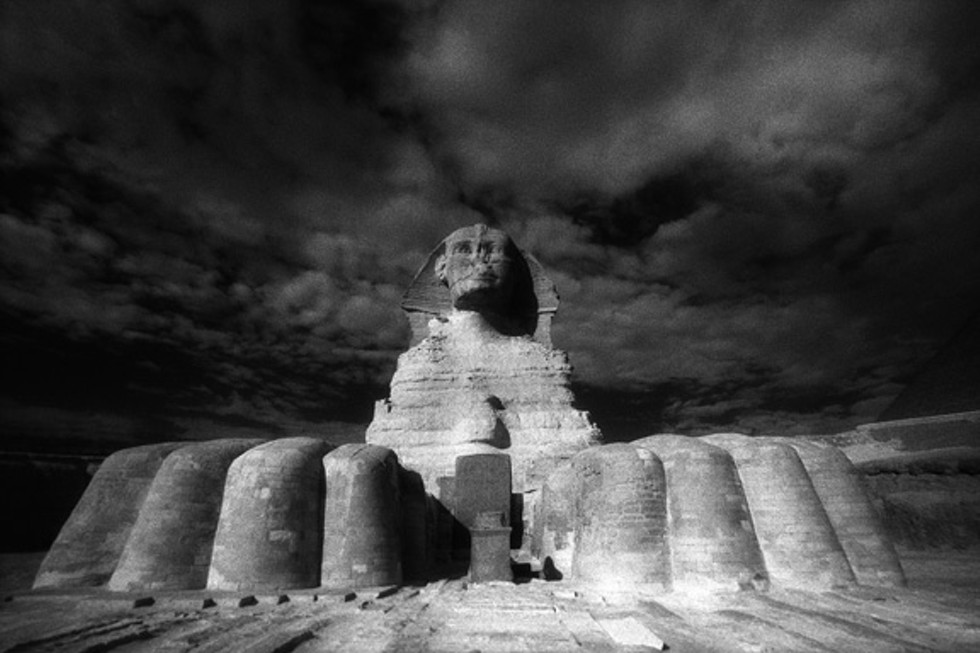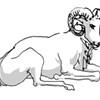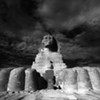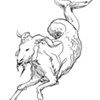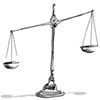[]
Revolution is seething in one of the unlikeliest of regions of the world: North Africa and the Middle East. We might have asked when the people ruled by imams, mullahs, sultans, princes, kings, ayatollahs, and ordinary despots were going to get restless. We might have guessed it would happen right around when Uranus and Pluto lined up in their current square aspect.
This combination is the very signature of revolutionary eras. We are in one now—and it hasn’t reached its peak. We’ve just seen dictators tumble in Tunisia and Egypt, with uprisings currently under way in Algeria, Bahrain, Iran, Iraq, Libya, Morocco, and Yemen—so far. Many have turned bloody in recent days.
The overthrow of the Mubarak dictatorship last month in Egypt was nothing short of astonishing. You really had to be Glenn Beck to miss the party. For 30 years, Mubarak ran the country brutally, with his secret police “disappearing” citizens into the Ministry of the Interior if they got out of line. He was turned to a fugitive in just 18 days. His spy chief, who had been Dick Cheney’s go-to guy on “extraordinary rendition” (the US offshore torture program), got to be vice president for two weeks, before he, too, was reduced to a political mummy.
This is a sign of things to come. Anyone who has been to Egypt can tell you there’s something extraordinary about the place. I believe that its antiquities are the oldest on Earth, and that the Great Sphinx predates any country whose name we know today. Egypt is a vital energy center of the planet, and the fact that its people were able to rise up is more than example for the world. This isn’t merely symbolic; it’s energetic.
Revolution is quietly brewing in the hearts of Americans, though until recently it’s been introduced as a brand without a product. Protests have now emerged mainly in two places: in Wisconsin, where there is an uprising against a law that would ban collective bargaining; and in Puerto Rico, where police occupied the main college campus in San Juan after a violent clash with students in December when they took over the campus to protest tuition hikes. As more states and municipalities use budget shortfalls as an excuse to eliminate human rights, we will certainly see more of this as the next few seasons unfold.
Technically, Uranus square Pluto holds its exact geometry for just three years (this one goes from 2012 to 2015). Yet astro-historian Richard Tarnas, author of the acclaimed Cosmos and Psyche, notes that this aspect and those in its group (the conjunction and opposition) can have an orb of influence extending for more than a decade. The most recent major alignment of Uranus and Pluto happened in 1965-66. Yet we can see early rumblings of what we think of as 1960s-styled social progress going back to the mid 1950s, when the Supreme Court ordered integration of public schools in Brown v. Board of Education of Topeka.
In that same era, the Beat Generation of writers, known for its liberationist philosophy, drugs, adventures, alternative forms of sexuality, freedom of expression, and antimaterialism—all characteristic of Uranus-Pluto—came to prominence a full decade before the conjunction, breaking open barriers that millions of people would cross in the following years. Bob Dylan said he never would have become who he was if he hadn’t read On the Road by Jack Kerouac.
There is often a slow warmup of Uranus-Pluto aspects, as events scattered across time and geography coalesce into what seems like one vast movement. One thing leads to another. Social change, pointed toward the future, gathers momentum. In the Middle East, we saw enormous uprising in Iran in 2009 and 2010. Now, feeling the vibrations of the nonviolent revolutions of Tunisia and Egypt, Iranians are rising up again.
It’s often in hindsight that we put together the effects of this type of astrology, though at the moment all we need to do is look at the front page of any newspaper or news website—and feel the vibes pulsing through the planet waves. This thing we keep describing as 2012 has as its epicenter the Uranus-Pluto square.
Pluto has been stirring the pot of Capricorn for two years now, and Uranus is about to make its ingress into Aries, where it will be the next seven years. You can think of Pluto as having softened up previously hard and fast institutions: Banks and national economies have collapsed, dictators have fallen by the wayside. Moreover, ideas about power are changing.
Around the corner in Aries, Jupiter has recently arrived, and is now square Pluto. Jupiter square Pluto is a passionate aspect, with the feeling of religious zeal and an all or nothing approach. The elemental force of Pluto focuses the idealism of Jupiter into action, giving drive and substance to what were previously just interesting ideas. In mid March, just before the equinox, Uranus arrives in Aries to stay for the next seven years. The ingress of this inventive, revolutionary energy into Aries feels like an extended springtime of the soul. It looks like the ultimate astrology of a global awakening, based on millions of individual awakenings.
There is the recognition that “the world is changing and so am I.” We get an invitation to expand our ideas about existence, and live closer to the edge with more vitality and explore life with an experimental spirit. Let’s face it. The smug piety that has permeated society during the past few decades could use a few friendly cosmic jolts of orgasm. Our ideas about relationships have grown so moldy and brittle the best thing we can do with them is chop them up and make a huge bonfire on the spring equinox.
Astrological events that affect countries also affect people. We all live on the same planet. Let’s consider how that bonfire might look in two national horoscopes. The first is Iran, which seems to be the epicenter of the world’s worst fears. The chart I prefer for Iran is the return of the Ayatollah Khomeini to his country in February 1979—which was the start of the revolution that year. The chart has early Aries rising and an Aries Moon. This is a spritely, adventurous chart on the outside, driven by emotion.
Behind all the revolutionary glee, masked by a kind of militant populism, is a conservative and authoritarian core. That is characterized in the chart by the government angle poking up into Capricorn. And behind that is all the religiosity we know is one of Iran’s most famous exports—Venus and Neptune are in Sagittarius.
Now that Uranus is moving up on that Aries ascendant, a hidden factor is coming to light: The youth of the nation is rising up. There is a new generation that has no desire to be told what to believe, threatened with execution, and told they’re bad people.
Pluto going through the government angle of the revolution is making the national leaders feel like they’re concentrating their power, but what they are really doing is collapsing their own structure. They seem like they’re on top of things, but they’re about to be met by a revolutionary force unlike anything they’ve ever encountered. Remember that Iran is a country prone to revolutions; it has a long history. The mullahs are relative newcomers.
As for revolution in the United States: It doesn’t look like a political event—it looks like a personal and economic one. I wish I could explain the horoscope of the United States to Karl Marx. I’m not sure if he would accept the premise of astrology, but he would recognize his idea that the primary US chart paints the picture of a commodified nation. Everything becomes a commodity; if you get paid for something, you get respect. It allegedly matters less if you have talent—and people seem to like it that way.
Here’s how it looks in the chart. Sagittarius rising puts Cancer in area of the chart called the 8th house. That’s the house of “other people’s resources,” a complex house that includes sex, banking, stock trading, inheritances, dowries, and marriage contracts. That sounds like a weird mix, but they all have one thing in common, which is resources changing from one party to the other, or resources being traded. It’s a house where you can gain a lot, experience deep pleasure, and, notably, sell out very easily.
The 8th is the house of “sign your life away”: the house of commodification. Obviously, people feel this way in other countries, but there are few places on Earth that have turned everyone and everything into a commodity, where if you take care of people you can be accused of being a traitor. Our characteristically American expressions include “You have to sell yourself all the time” and “You have to give him credit, he’s making a lot of money.” I would contend that to the extent that these have been global values, they are American exports.
Our great nation has many planets in the house—Sun plus Venus, Jupiter, and a few others. The concentration is early in the sign, which in part explains what’s been happening to our banking system. Pluto in Capricorn has been coming at those Cancer planets like a battering ram. The cardinal cross I’ve been writing about for a year is directly influencing this cluster, and this idea of everything is a commodity.
In the next act, Uranus, the planet of revolution, is going to make a series of square (90-degree) aspects to those planets. That tells me we start to figure out how sold out we are, and in the same gesture, follow the impulse to do something about it. This is a rebellious impulse but it’s also self-creative, and in fact the self-creative seems to burst out first. I would propose that from a growth standpoint that’s a healthy thing. Rebelling for its own sake is one thing, but following a creative impulse that gets old, useless energy out of the way is another.
For the United States, Aries is on one of the most creative angles of the chart, and Uranus in Aries is about self-actualization. Taken in the most positive light, I see this transit firing up the courage and thirst for freedom that many people need in order to be themselves. Authenticity is a concept we could use more of.
Of course, this process will threaten those who are attached to the past. Along the way to getting free, we must encounter our own attachments, our own fear and guilt. But these tend to yield to creative impulses. And while humanity may seem like it’s in one of its most backwards moments ever, creativity, self-actualization, and the drive for liberation are time-honored human traditions as old as the Great Sphinx—and equally mysterious.







